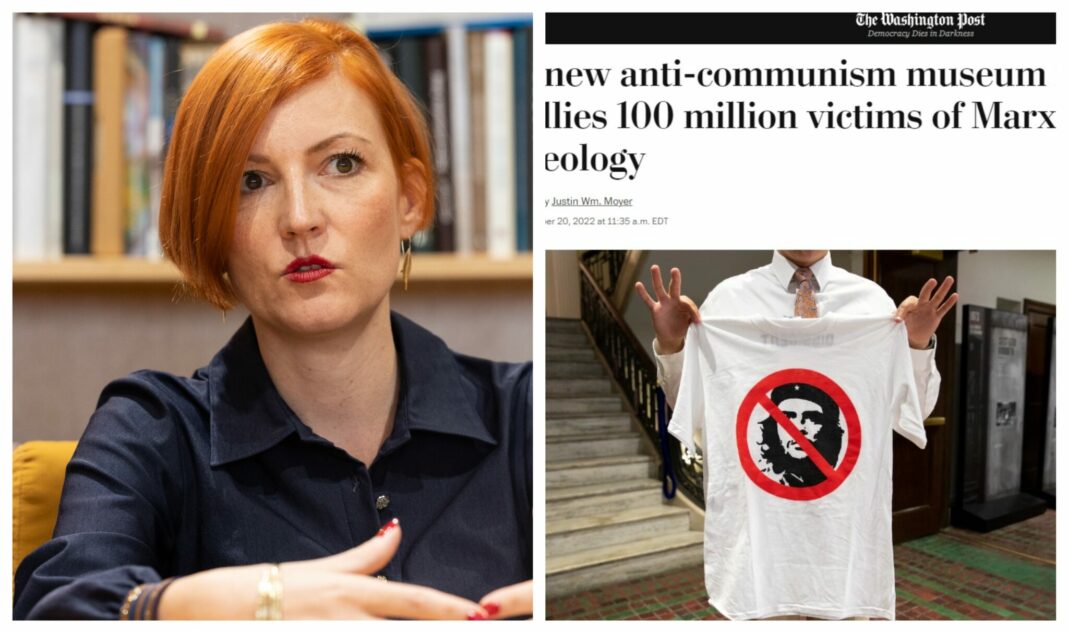By: Spletni časopis
In Koper, on Friday, May 17th, the exhibition about the murder of around 3,500 prisoners of war, carried out by the Slovenian Communist Party after the end of the war, will also be available for viewing at the gallery of the Franciscan Monastery of St. Anne.
The exhibition Pod Macesnovo gorico – Slovenian Katyn, which was removed from the programme of the Museum of Contemporary History after the new Minister of Culture, Asta Vrečko (Levica), took office, citing it as inappropriate in content and expertise, was also featured in the European Parliament in April. The President of the European Parliament, Roberta Metsola, attended the opening of the exhibition on the tragic Slovenian history, which the government attempts to conceal. The exhibition’s author, Jože Dežman, was politically removed from the top position of the Museum of Contemporary History by Minister Asta Vrečko, who honours the traditions of communism and glorifies ruling by dictatorship, in order to obstruct the professional work of exposing decades of concealed crimes of the totalitarian socialist regime.
In the hall of the Franciscan Monastery, on Friday at 8 pm, they will also screen the documentary film 3450 – Fratricide in the Pit at Macesnova gorica. After the screening, there will be a discussion with the author of the film and the exhibition, Dežman, moderated by Erika Jazbar.
From April to September 2022, archaeologists excavated the mortal remains of 3450 men in the pit at Macesnova gorica, murdered from June 2nd to June 10th, 1945. The war in Europe ended on May 8th when German General Wilhelm Keitel signed the unconditional surrender. May 8th is celebrated as the day of the end of the war by the European Union, of which we have been a part for the last decades. In the Soviet Union and the countries subordinated to Moscow after World War II, including the former Yugoslavia, May 9th is celebrated as the day of the end of the war. This date is also commemorated by the Mayor of Ljubljana, Zoran Janković, who is partly of Serbian descent and also represents the more pro-Russian faction of the Slovenian left, including a significant portion of the government.
The discovery of the extensive crime of the post-war Slovenian authorities was complicated; the pit was partially mined during the massacre in 1945, and a significant explosion occurred about ten years later when the entire ceiling of the cave was blown up. In order to discover the mortal remains of the victims, researchers had to excavate around three thousand cubic meters of blasted rock. Due to the fragmentation of the bones, an exact count of the victims was not possible. There were at least 3450 and probably not more than 3500. Around half, more than 1750, were over 24 years old, more than 800 were between 20 and 23 years old, and more than 800 were under twenty years old. None were younger than 14. They were all men.
During the excavation of the mortal remains, more than 10,000 items were found. Most of the items belonged to the victims, while more than 1600 belonged to the perpetrators. Testimonies from those who escaped from the pit at Macesnova gorica, research from 1990 to 2017, especially in 2019 and 2022, have confirmed that the pit at Macesnova gorica was a slaughterhouse and mass grave of Slovenian prisoners of war, which was tabooed by the previous regime of Titoism.

